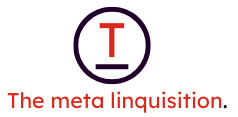Real estate values are a crucial indicator of economic health for any community. The ebb and flow of housing markets are often a reflection of broader economic trends, influenced by a multitude of factors, ranging from interest rates to employment growth. In recent times, the world has witnessed how events like the COVID-19 pandemic can disrupt not only business and economic activities but also have a profound impact on the real estate market. Understanding the relationship between local economic trends and real estate values is vital for investors, homebuyers, and policy-makers alike.
Influence of Economic Health on Real Estate
Economic health is a broad term that encompasses various factors such as employment rates, business growth, and consumer confidence. These elements are inextricably linked to the real estate market.
Also to discover : What are the best strategies for real estate lead generation?
Employment and Housing Demand
When an area experiences job growth, there is often an increase in real estate demand. This is because more employment opportunities can lead to an influx of workers looking for housing, thereby driving up house prices. Conversely, high unemployment rates can lead to a decrease in demand, causing housing prices to stagnate or fall.
Business Development
The establishment of new businesses or the expansion of existing ones can have a significant influence on real estate values. Commercial real estate, in particular, can see a surge in value as businesses seek office spaces, retail locations, and industrial properties. This business growth can spill over into the residential sector as well, as employees seek homes close to their workplaces.
Also to see : The rise of smart homes in the real estate market
Consumer Confidence
Consumer confidence reflects how optimistic people are about their economic prospects. When consumer confidence is high, individuals are more likely to make significant purchases, such as buying a home. This can lead to increased demand in the real estate market and, therefore, higher property values.
The Role of Interest Rates on Real Estate
Interest rates are a critical component of the economy that directly impacts real estate markets. The National Association of Realtors (NAR) often provides insight on how these rates affect consumers and the housing market.
Impact of Lower Interest Rates
When the economic climate leads to lower interest rates, borrowing money becomes cheaper. This affordability encourages homebuyers to enter the market, which can increase demand and, in turn, drive up house prices. For commercial real estate, lower interest rates can facilitate business expansion and property investments.
The Effect of Rising Interest Rates
On the other hand, when interest rates rise, the cost of borrowing increases, potentially cooling off the housing market. Buyers may be hesitant to take out mortgages with higher rates, which can lead to a decrease in demand and a stabilization or decrease in house prices.
Post-Pandemic Real Estate Dynamics
The COVID-19 pandemic introduced unprecedented challenges to the economy and the real estate market. The NAR has studied its impact extensively, and the findings are quite revealing.
Shifts in Housing Preferences
The pandemic has changed the way people view their living spaces, with a trend towards larger homes with more amenities. This shift has altered demand and affected housing prices in various markets. Areas that can provide these types of properties may see an increase in real estate values.
Remote Work and Location Flexibility
As remote work becomes more commonplace, there is less need for workers to live close to their offices. This flexibility has allowed many people to move away from expensive urban centers to more affordable areas, impacting real estate markets across different regions.
Ethical Considerations and the NAR Code of Ethics
The NAR’s Code of Ethics ensures that realtors operate with integrity and maintain public trust. Ethical practices can influence consumer confidence and, by extension, the real estate market.
Importance of Ethical Practices
Ethical behavior in real estate transactions fosters trust between consumers and realtors. This trust is essential because it enables transactions to proceed smoothly, and when people feel confident in their agents, they are more likely to invest in the market.
The NAR’s Role in Upholding Standards
The NAR provides continuing education and resources to help realtors adhere to their Code of Ethics. By holding its members to high standards, the NAR supports a healthy real estate market where consumers feel protected and investments are secure.
Looking Ahead: Market Predictions and Economic Indicators
Predicting the future of the real estate market involves analyzing a variety of economic indicators. The NAR frequently publishes housing market reports that provide valuable insights into where the market may be heading.
Analyzing Economic Indicators
Indicators such as GDP growth, unemployment rates, and consumer spending can give us clues about the future state of the real estate market. By understanding these trends, stakeholders can make more informed decisions.
The Importance of Market Predictions
Market predictions can help everyone from policy-makers to individual homebuyers and sellers make better choices. In a constantly evolving economic landscape, staying informed is crucial for navigating the real estate market.
In conclusion, local economic trends have a substantial impact on real estate values. As we have seen, factors such as economic health, interest rates, and even pandemic-induced changes play a significant role in shaping the demand and prices of properties. The NAR’s efforts to uphold ethical standards in the industry and provide up-to-date market insights are invaluable in fostering a resilient real estate market. Real estate stakeholders would do well to keep a close eye on these economic indicators and trends to anticipate market fluctuations and make strategic decisions. Whether you are buying your first home, investing in commercial real estate, or simply trying to understand the economy, recognizing the connection between local economic trends and real estate values is essential.











